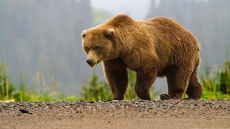A food fight of sorts could be growing between Canada and the United States over a tiny berry.
A U.S. researcher with the Cornell University Co-operative Extension is suggesting Canadians use a different name when selling Saskatoons south of the border.
Jim Ochterski says there is a surge in demand for the berry in the U.S., where it has been known for years as the Juneberry.
"We're at a point now where there's actual dollars at stake," Ochterski said in a phone interview Tuesday from Canandaigua, N.Y.
"We're taking our heritage name for the berry, called Juneberry, and Canadian growers have their heritage name for the berry, called Saskatoon, and now there seems to be some marketing tension between the two."
Ochterski said Canadian growers might benefit if they use the name Juneberry on packaging because it's what American consumers know.
"Because produce is marketed internationally, we wind up with two different names for the same fruit and it becomes a question of would the name Saskatoon be preferred in the marketplace or would the term Juneberry be preferred in the marketplace," he said. "And based on what I've been experiencing here in the U.S., the term Juneberry has been resonating very strongly with consumers and buyers."
Ochterski insists he's not suggesting a complete name change — just adding the name Juneberry for cross-border sales. He says it would "speed up sales tremendously."
He wrote a letter to the Saskatoon Berry Council of Canada asking if it would be open to the idea. Ochterski wrote that he raises the issue with "a pang of compunction" because he knows how much work has gone into marketing the Saskatoon berry and its deep roots in Canadian prairie culture.
The Saskatoon berry, which mostly grows on the Prairies, looks similar to a blueberry but is considered more nutritious.
The website www.juneberries.org, which is supported by the Cornell group, says the berries have about as much vitamin C, thiamin, riboflavin, pantothenic acid, vitamin B-6, folate, vitamin A and vitamin E as blueberries. It says they also have twice as much potassium and iron as blueberries.





